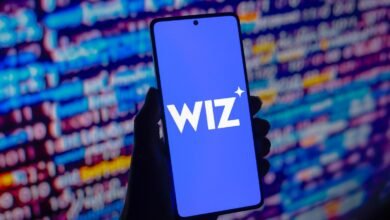SentinelOne Leads 2025 IDC XDR MarketScape

▼ Summary
– SentinelOne was named a Leader in the IDC MarketScape: Worldwide Extended Detection and Response (XDR) Software 2025 Vendor Assessment.
– The company’s AI-powered Singularity platform unifies native and third-party security data to stop attacks and reduce tool sprawl.
– SentinelOne’s Purple AI provides GenAI and agentic AI capabilities to accelerate threat hunting, triage, and reporting for security teams.
– Key platform strengths include minimizing alert noise, protecting devices offline, and offering robust ransomware defense and identity threat detection.
– The unified architecture spans endpoint, cloud, identity, and SIEM capabilities, positioning SentinelOne as a foundational XDR solution for enterprises.
SentinelOne has secured a position as a Leader in the IDC MarketScape: Worldwide Extended Detection and Response (XDR) Software 2025 Vendor Assessment, reinforcing its standing in the AI-native cybersecurity field. This recognition highlights the capabilities of its Singularity platform, which integrates native and third-party security data to effectively counter cyberattacks. The platform’s unified approach, combining a single agent, consistent data collection, unified analytics, and automated workflows, sets a high bar for modern threat defense.
Ely Kahn, SentinelOne’s Vice President of Product Management, emphasized that the acknowledgment validates the company’s strategic direction and execution. “Our unified Singularity Platform, featuring Purple AI, enables security teams to accelerate their response, enhance team capabilities, and halt even highly sophisticated attacks,” Kahn stated. This helps organizations maintain resilience amid an ever-changing threat environment.
Through its Singularity Enterprise platform, SentinelOne delivers comprehensive XDR by merging native endpoint, cloud, generative AI, and identity security with external data sources. This integration supports advanced detection, rapid response, and proactive threat hunting. The IDC MarketScape report pointed to several key strengths, including Purple AI’s generative and agentic AI support for security operations center analysts, a reduced signal-to-noise ratio in alerts, and powerful search functionality.
The platform also incorporates a multi-layered defense strategy against ransomware, which can unfold silently or explosively. Devices remain protected even when offline, as SentinelOne conducts logic and analysis locally. Identity threat detection and response also play a vital role within the Singularity Enterprise ecosystem.
As organizations grapple with increasingly complex security landscapes, marked by fragmented tools, isolated data, and rising attack volumes, XDR adoption has become essential. SentinelOne’s architecture is designed to break down these barriers, offering a cohesive security operations framework.
Chris Kissel, Research Vice President for Security & Trust Products at IDC, noted, “With enterprises seeking to consolidate security operations and minimize tool sprawl, extended detection and response platforms are becoming foundational.” He added that SentinelOne stands out in the XDR market due to its unified architecture, which spans endpoint, identity, cloud, and SIEM capabilities, all enhanced by advanced AI and automation. “The introduction of Purple AI as an agentic SOC analyst is particularly significant, allowing security teams to speed up threat hunting, triage, and reporting through natural language and AI-driven workflows. This blend of breadth, depth, and usability solidifies SentinelOne’s leadership in the XDR space.”
SentinelOne’s AI-driven cybersecurity platform, built on a unified Data Lake, enables intelligent, autonomous systems that anticipate complexity and mitigate risk. Trusted by major global enterprises, including Fortune 10, Fortune 500, and Global 2000 companies, as well as government entities, SentinelOne is committed to helping organizations secure their digital futures.
The IDC MarketScape offers a detailed evaluation of technology suppliers, using a rigorous scoring model that incorporates both qualitative and quantitative criteria. It provides a clear, graphical representation of each vendor’s market position, helping technology buyers assess the strengths, weaknesses, and strategic alignment of current and potential suppliers.
(Source: MEA Tech Watch)





